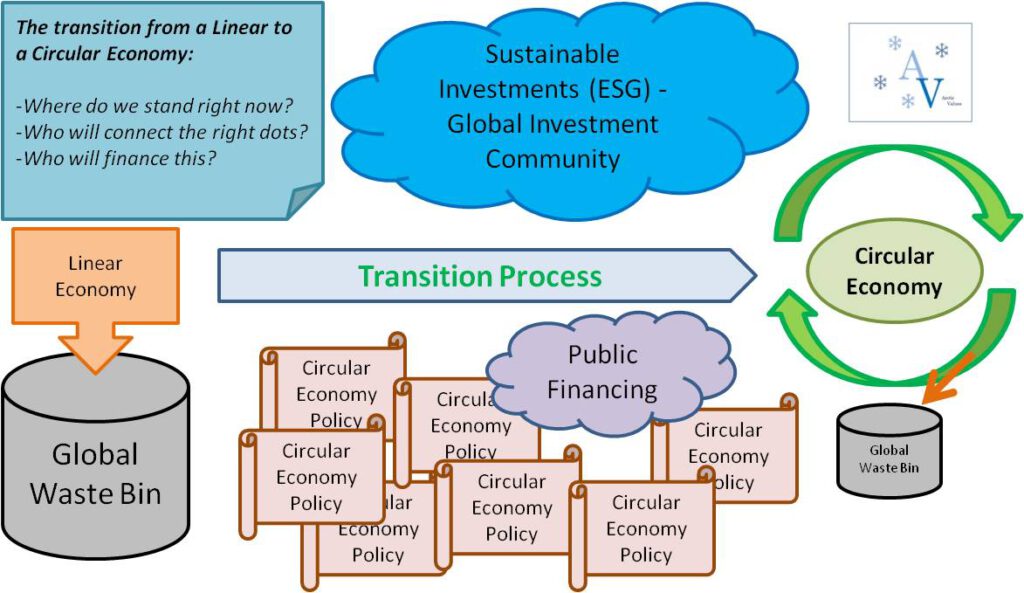by Adrian Braun
January 2021
The desired transition to move from a linear economy to a circular economy is becoming element more and more in relevant discourses across the globe. It will not change in year 2021. This is an important development and it requires continually stronger engagement by various actors. Although the societies across the nations play a crucial role and it matters how each individual proactively could make life changes that are in line with circular economy pathways, the actions of corporations and political leaders remain to the utmost relevant.

Like in so many important fields, whenever a transition process needs to be accomplished proactive involvements of industry and political leaders (predominantly in industrial countries) are required. In the past very few years, there is no lack of new policies that determine and stress the significance of circular economy on all levels national, international, supranational, regional and local. Although, policies are often the catalyst of beneficial things that happen to our societies, in the beginning there is always the question if a policy remains only a policy or if an implementation phase sets in at some point that really deserves to be called implementation. Arguably, too often policies lacking sophisticated implementation and with the myriad of circular economy policies appearing, hopefully many of those will eventually lead to actual large-scale impacts.
We perceive that many circular economy pilot projects are under way. A very good example are smart-city initiatives across the globe that embrace the construction of green buildings that are energy-efficient and have sophisticated waste management systems. These projects are a very good step into the right direction, but the great global challenges of our times that necessitate the end of linear economy practices, require us (across the world) to go beyond the pilot projects and establishing region-wide and later on nation-wide smart-city and smart-region transitions. The point to raise here is that depletion of natural resources and the rise of waste streams is neither on the downturn nor there is the golden policy in place that will guarantee any notable downturn in the foreseeable future.
Many important decisions and smart solutions are ahead of the global community to achieve a transition towards circular economy that eventually deserves to carry this notion. One essential aspect now and continually will be how to master the challenge of financing the circular economy initiatives. Going beyond supranational funding (e.g. EU funding schemes (Horizon Europe)) and also beyond asking the tax-payers is enormously important here, as those actors cannot carry the burden alone. The global financial markets and the global investment community needs to be addressed in this perspective much more and emerging green financial instruments, such as, green bonds, green funds have to be utilized to succeed in this respect. It is also worth to get more familiar with the ESG concept “Environmental, Social, Governance” that is the conceptual framework that helps investors to assess their investments in terms of sustainability impacts. Hence, whenever the provision of accurate ESG data for a circular economy project (e.g. a sustainable building, plastic waste collection facility…) has been done and is accessible for global investors, chances increase enormously to achieve financing from the private sector. Therefore, all actors involved should try to embrace the wider picture in the discourse across the whole transition process as depicted in the chart, from the policy development, over to the diverse “sustainable” financing solutions to the actual implementation in the end!
Legal Notice / Impressum – Arctic Values – Copyright © 2023